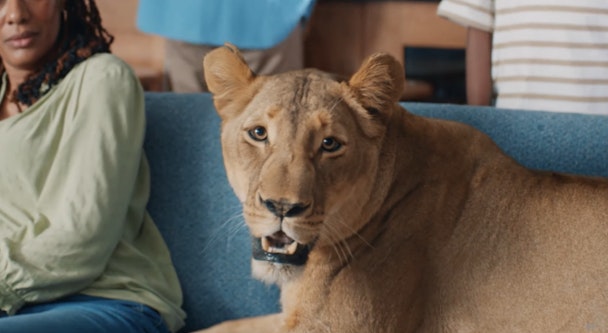How to use the creator playbook to get the most out of Women’s World Cup activations
Faithful fans watching in the west will be setting early alarms to catch live World Cup matches from Australia and New Zealand. But there are plenty of ways that brands can ensure time differences don’t prevent them from reaching footy followers the world over.

A still from ITV’s World Cup teaser campaign / ITV
Women’s football has gained a lot of ground in recent years. And advertisers have paid attention, following the crowd with serious investment. According to Forrester, 90% of the ad inventory available for this year’s tournament was already sold out by June.
“This will be the most attended Women’s World Cup ever, “ says principal analyst Dipanjan Chatterjee, who notes that brands are particularly attracted by the demographic makeup of that audience. “Brands targeting younger women will find a ready audience at this World Cup – Gen Z women are 1.6 times more likely to be highly engaged soccer fans than women 45 and over.“
Advertisement
Fifa said over a billion people watched a World Cup game in 2019. Aggregate viewership – from catchup, social or other means – might help this year’s competition beat that high score, but with kick-offs coming early in the day for domestic viewers in the UK, US and Europe, live programming might not provide much of an assist (probably the reason why ITV’s teaser campaign mentions its streaming service in the same breath as its linear broadcast channel).
Though that might be a problem for brands relying on traditional sports marketing channels such as linear TV, agency experts say thinking laterally is the way forward. According to John Firth, a behavioral analyst at research company Canvas8: “Game times may be inconvenient, but nearly three-quarters of British football fans (72%) still plan to watch the 2023 Fifa Women’s World Cup this summer. Interest is very much there.”
Meanwhile, Joan London’s executive creative director Kirsty Hathaway says: “While the time difference may have an impact on viewing figures of the games, brands need to think differently about how they activate outside of the usual broadcast media spots.”
Advertisement
Though it’s a team sport, she says advertisers should focus on the individual personalities on and off the pitch. “Women’s football has come on leaps and bounds in terms of awareness over the past decade, largely due to the passion and personalities of the players themselves.
“This is something that EE has really recognized in its strategy with its show Lionesses: Down Under with England Football. With behind-the-scenes interviews and news broadcasted on non-match days, it’s a smart way to drive the conversation, even if they will miss the games themselves.”
KC Haiker, executive director of growth at San Diego creative agency Basic/Dept, says brands should lean into audience fragmentation around sports. “Gone are the days when entire nations gathered to watch the same event at the same time. Sports consumption is more fragmented than ever – viewers are more likely to be second screening to follow live scores and conversations; and more likely to watch on digital streaming platforms than previous generations.”
Influencer marketing might hold some answers, Haiker says. “Fans are also more interested in learning about their favorite athletes as three-dimensional humans, so brands are taking to social channels to facilitate real connections between fans and athletes around shared passions – and not just sport. Brands looking to activate around the Fifa Women’s World Cup should look to foster engagement between athletes and niche online communities based on shared passions, whether that be cooking or comic books, gaming or ‘get ready with mes’ or anything in between.“
Suggested newsletters for you
Rachel Powney, global vice-president of marketing at Influencer, agrees. “Strategic partnerships with creators can be a great way to connect with and fuel this fandom. Creators can be a highly impactful vehicle for engaging fans by developing authentic content and storytelling to add to the fan experience.”
Firth adds that the game’s growing popularity is adding more dimensions for brands to get involved – and to be led by purpose rather than just opportunism.
“Brands should look to support tangible moves to make the sport more accessible at home,” he suggests. “The on-field excellence is still being offset by some serious issues, such as football boots not being made for women and causing injury, and the Euros victory not actually leading to increased participation among inner-city teen girls in England. Supporting practical initiatives to improve accessibility of the beautiful game will be much more keenly felt.”

